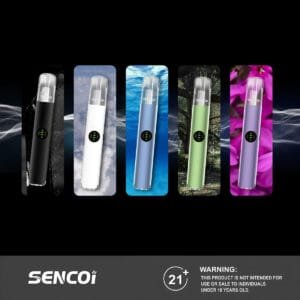
Vaping has undeniably swept across the globe, evolving from a niche product to a widespread phenomenon. But how did this transformation happen? Vaping’s rise to fame was not an instantaneous event; rather, it has a rich history spanning nearly a century.
A Century of Development
The concept of what we now know as a “vape” dates back to 1927 when Joseph Robinson patented a device intended to heat tobacco electrically rather than burn it. Although his invention never saw commercial success, it introduced a new technological idea.
In the 1960s, Herbert Gilbert patented a similar product that closely resembles today’s devices, yet it failed to gain traction. In the late 1970s, Phil Ray and physician Norman Jacobson developed the first commercialized “e-cigarette,” which evaporated nicotine rather than burning it, but again, it didn’t succeed. Ray is credited with coining the term “vape,” even if their early attempts didn’t lead to a thriving market.
An Inventor’s Motivation
The early 2000s were filled with excitement about technological advancements, including vaping. Chinese pharmacist Hon Lik was driven not just by optimism but by personal struggles. After realizing that nicotine patches were causing him nightmares, he began working on a device to offer a smoother, cleaner nicotine experience. The tragic death of his father from lung cancer further fueled his determination.
Though his initial designs were bulky and required frequent maintenance, Lik’s innovation inspired a new wave of developments in the vaping industry.
Empowering Consumers
The appeal of a compact device that heated rather than burned tobacco resonated with many. Innovations began at the consumer level, as users started modifying their devices with power tool batteries for a more substantial nicotine hit. This practice gave rise to the term “mods,” as users sought to enhance their vaping experience.
While these modified devices had their drawbacks, they laid the groundwork for a new era of vaping technology.
A Lasting Legacy
Early vape devices typically consisted of a battery and a heating coil, leading to safety concerns like devices “exploding.” However, as manufacturers incorporated advanced circuitry, safer, regulated mods became widely available.
The tipping point for vaping’s popularity came with the introduction of the vape pen. Nearly a decade after Lik’s invention, vape pens emerged in the early 2010s and transformed the market. Their appealing design and ease of use helped the number of vapers soar by over 34 million between 2011 and 2018, solidifying vaping as a recognized alternative to traditional nicotine consumption.
Why Vaping Thrives Today
One major reason for the ongoing success of vaping is the extensive customization options available. From different types of vapes (pens, mods, pods, etc.) to a vast array of flavors, the industry caters to diverse preferences.
Additionally, many vaping devices allow users to control their intake precisely, offering a level of choice rarely found in other nicotine delivery methods. This empowerment gives users greater agency over their consumption, which many find appealing.
Looking Ahead
The future of vaping is poised for further innovation, and the industry shows no signs of slowing down. From its humble origins to its current global presence, the journey of vaping continues to unfold, and we eagerly anticipate what comes next.





